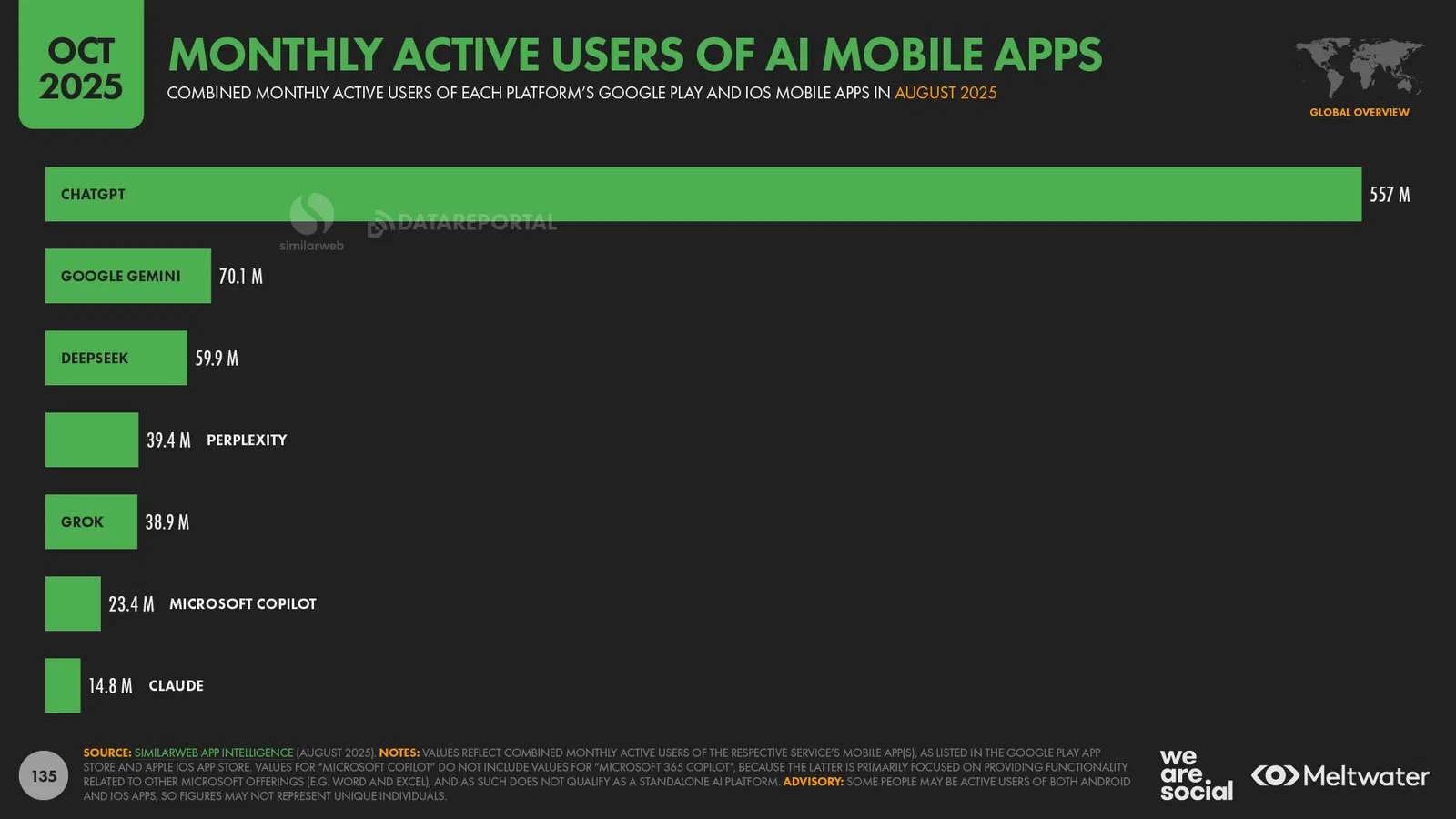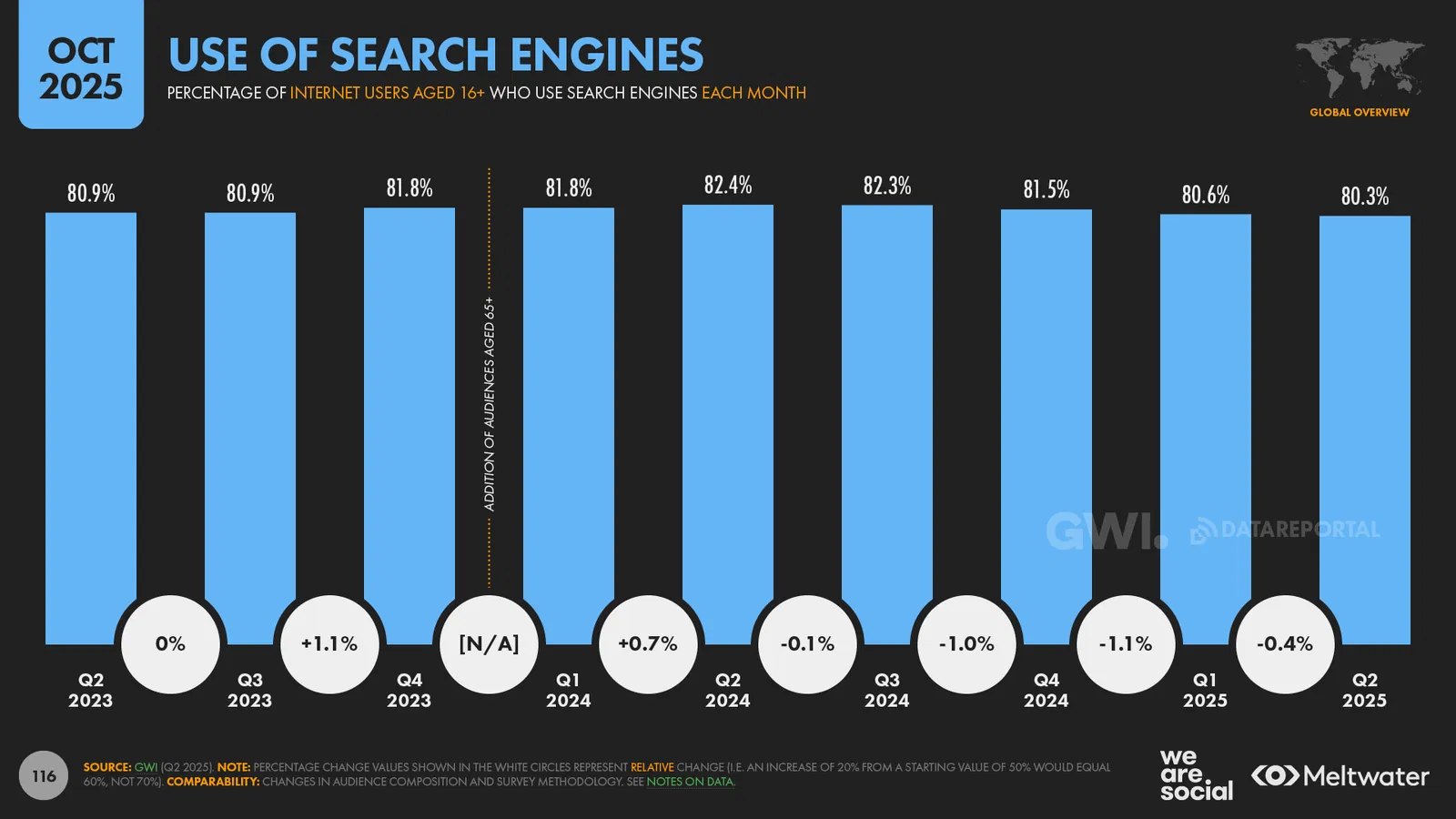
CMOs must adapt, as global ad spend becomes overwhelmingly digital
share on
As global ad spend becomes overwhelmingly digital, marketers in Asia Pacific are entering a new era, one defined less by adoption and more by behavior, strategy, and intelligent orchestration.
According to We Are Social and Meltwater’s Digital 2026 Global Overview Report, the digital saturation point has been reached. The next competitive advantage for chief marketers (CMOs) across the globe, lies in how effectively they adapt to AI-driven discovery, social media dominance, and the evolving digital divide.
Marketers are on track to spend US$1.16 trillion on advertising in 2025, with digital ad spend projected to reach 74.4% of total global advertising in 2025, up from 72.7% in 2024, underscoring a decisive global pivot that APAC marketers must accelerate. Search and social remain the dual engines of global performance marketing, together accounting for 54% of all ad spend, with Search at US$352 billion and social media at US$277 billion.
Don't miss: Global digital ad spend hits US$690 billion, poised to dominate in 2030

Naiyen Wang (pictured left), managing director, Southeast Asia at We Are Social said: “What really stood out to me is how rapidly digital behaviour is evolving, especially in mobile-first markets like Southeast Asia. People are active across seven or more platforms, which makes attention really fragmented. That highlights how important it is for brands to be both agile and culturally relevant, not just present."
"It’s not about one-size-fits-all content; it’s about tailoring content that caters to each platform’s unique user behaviour. I believe the real opportunity lies in how we adapt our strategies to reflect these shifting behaviours in a way that is native to the brand and platforms, while staying value-driven," Wang added.
Meanwhile, Alexandra Bjertnæs (pictured right), Chief Strategy Officer at Meltwater said they have observed a profound shift in how people discover brands, with more people turning to social media and AI platforms than ever before. "Among younger audiences, social media ads now carry more weight than traditional search in shaping awareness and perception, while the rise of GenAI, now used by more than a billion people each month, is transforming how people find and trust information," she said.
"For marketers and communicators, this is an exciting opportunity to build strategies that connect with audiences in new ways and meet them where they are today," added Bjertnæs.

For developed markets such as Australia, the report highlights an increasingly competitive ad environment. Australia leads with US$769 in ad spend per person, one of the highest globally after the USA and UK, positioning it as a benchmark for mature digital economies in the region.
Despite the saturation, social media continues to deliver the fastest growth and strongest engagement. Global social media ad spend is set to rise 13.6% year-on-year in 2025, outpacing search at 11.1%. It is now the number one driver of brand awareness among 16-to-34-year-olds, surpassing even TV. In youth-heavy markets where digital natives dominate, social remains the primary gateway to brand discovery and engagement. With 5.66 billion people (two-thirds of the global population) using social platforms monthly, marketers no longer question whether their audience is online. The real challenge is standing out amid the noise.

AI adoption surges past 1 billion
The Digital 2026 report also provided compelling evidence that more than 1 billion people now use standalone generative AI tools every month. OpenAI’s CEO reported that ChatGPT alone had 800 million weekly users in early October 2025. This rapid adoption is reshaping online behaviours, particularly search, with GWI data showing a steady decline in the number of people who use a conventional search engine each month.
Generative AI (GenAI) has transitioned from novelty to necessity. The report notes that over 1 billion people now use GenAI tools such as ChatGPT every month, marking a new era in how consumers find and process information. AI-powered search is also redefining discovery. Google’s AI search summaries already reach 2 billion monthly users, signaling a fundamental shift from link-based to answer-based search behavior. For CMOs, this means rethinking SEO and SEM strategies to optimise for AI-curated experiences where visibility depends on being part of generated responses, not just ranked results.
Looking ahead, 2026 will demand AI-driven precision, from creative production and targeting to customer service automation. For Southeast Asia’s fast-growing economies, inclusivity remains a strategic frontier. The global report highlights persistent disparities in digital access that marketers must account for. Men are 7% more likely to be online than women (75.7% versus 70.7%), creating a gendered digital gap that brands must address through representation and tailored outreach.
Meanwhile, the urban-rural divide remains stark. 86.5% internet penetration in urban areas versus 54.5% in rural communities. For brands targeting emerging consumers in Indonesia, the Philippines, Thailand, and Malaysia, the next wave of growth will depend on mobile-first, low-data experiences that overcome connectivity constraints.

Despite shifts in digital behavior, search remains central to brand discovery. The report showed that 80.3% of online adults still use search engines monthly, though this is the lowest in recent years. Even with that dip, search remains the top source of brand discovery, driving how users learn about new products and services.
Additionally, online retail ads are surging, now making up 23.7% of digital ad spend (about US$204 billion in 2025), surpassing TV for the first time. Much of this overlaps with search and product ads on e-commerce platforms, signalling that retail media is becoming the new search battleground for marketers. Meanwhile, Google’s traffic has dipped just 1–2% in two years but still commands 90% of global search referrals. With search ad spend forecast to reach US$352 billion in 2025, the channel remains too powerful to sideline. The takeaway, is that search continues to anchor the funnel, bridging discovery and conversion across APAC.
As digital spend surpasses three-quarters of global budgets, the battle for relevance in 2026 will not be about being online, it will be about orchestrating intelligently across social, search, and AI ecosystems. Marketers in APAC’s diverse economies must balance advanced market saturation with inclusion challenges, ensuring that creativity, cultural nuance, and technology converge to meet audiences wherever they are in their digital journeys.
Back in August, a report by Bain & Co titled "Advertising in the digital age, in India and around the world" found that digital advertising has become the driving force in the global ad market, as consumers increasingly spend time online. Last year, global digital ad spends reached US$690 billion, growing 15%–20% annually, significantly outpacing traditional channels.
Over the next five years, digital is projected to command 80%–85% of total ad spend, expanding at a CAGR of 11%–13%. The advertising sector overall, valued at nearly US$1 trillion globally, continues to outstrip GDP growth, rising from 0.6% of global GDP in 2015 to around 0.85% in 2024.
Related articles:
Australia's ad spend tops $9bn, but June slump highlights market fragility
Survey: HK ad spending saw 6% YOY decline in Q2 2025
What CMOs need to know about the APAC B2B buyer journey in 2025
share on
Free newsletter
Get the daily lowdown on Asia's top marketing stories.
We break down the big and messy topics of the day so you're updated on the most important developments in Asia's marketing development – for free.
subscribe now open in new window
